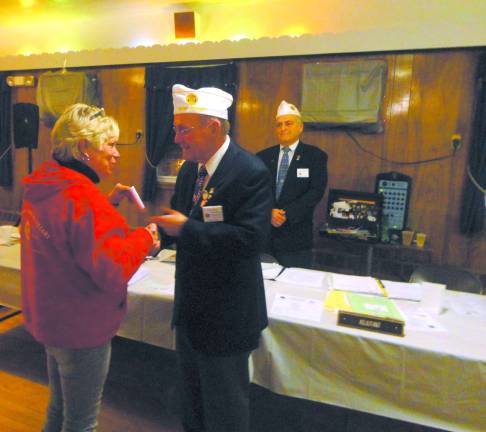County Legion posts come together to support veterans’ recovery



FRANKLIN — Members of Sussex County’s six American Legion Posts are helping New Jersey’s homeless veterans, one bedroom at a time.
James Amos, New Jersey’s State Legion Commander, made a visit to the Jan. 15 Sussex County post meeting at Franklin’s Legion Hall to introduce this year’s department project — helping veterans on the road to recovery by furnishing rooms at Veteran’s Haven North.
Veteran’s Haven, a transitional housing program for homeless veterans, has opened a northern New Jersey location in Hunterdon County’s Glen Gardner Borough. Residents at the facility will have access to professionals specializing in psychosocial rehabilitation, social services, addictions, vocational rehabilitation and nursing in order to instill realistic life goals and prepare the resident for community reintegration, according to their mission statement.
Veteran’s Haven North has been open for 18 months and currently houses 62 veterans, according to Amos. The enrollment is low, he added, because there is no certificate of occupancy in place as of yet.
“When they get the C.O., it’s gonna take off like a fire up there,” he said.
A $1,500 donation will fully furnish a room with a bed, dresser, desk, chair and night stand — and entitle the donor to a plaque of recognition outside the room. Amos was presented with four $1,500 donations and three smaller donations by the Sussex County groups and their auxiliary, bringing the total to nearly $95,000 collected in the state.
The Legion was able to raise $165,000 in donations for the original Veteran’s Haven, in Camden County.
About Veteran’s Haven
To qualify for Veteran’s Haven, a person must be homeless, qualify as a veteran under USDVA guidelines, and be alcohol and drug free at the time of admission.
Eligible veterans are able to stay in the program for up to two years, provided they meet the requirements, including banking a certain amount of money each month and looking for gainful employment.
The program currently has a 76 percent success rate, compared to 50 percent at other facilities.